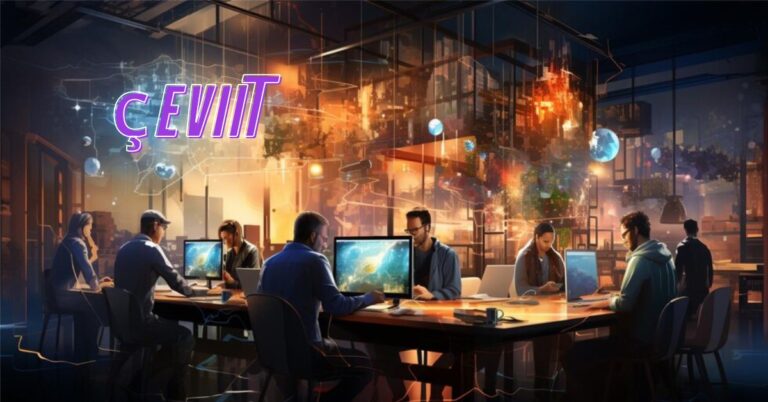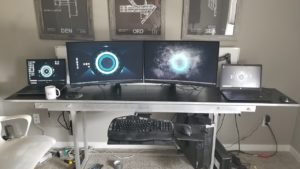When you’re looking to build a high-performance computing (HPC) system, you need to consider the right GPU. And if you’re not sure which one is right for your needs, you should check out our latest GPU servers benchmark and graphics card comparison chart. This chart includes the latest and greatest GPUs from both AMD and NVIDIA, so you can find the right match for your specific needs. In addition, we also include information on pricing, performance, and more. So whether you’re looking to build a small HPC system or a large supercomputer, this chart will help you get there.
What is a GPU Server?
GPU servers benchmark and graphics card comparison Chart
GPU servers are used to speed up graphics-intensive tasks such as rendering, video encoding, and simulation. With the popularity of virtual reality (VR) and augmented reality (AR), GPU servers have become even more important. By comparing the performance of different GPUs against each other, users can find the right card for their needs.
In this chart, we compare the performance of a wide range of GPUs against each other. The results show that there is no single “best” GPU for server use. However, certain cards perform better than others in specific scenarios. This information can help you choose the right GPU for your needs.
Types of GPU Servers
Types of GPU Servers
There are many types of GPU servers, but the most popular ones are based on graphics processing units (GPUs). GPUs have a lot of horsepower and can handle large amounts of data quickly. They’re perfect for tasks like rendering 3D images or animations.
GPU servers come in different shapes and sizes. Some use multiple GPUs, while others just have one. They can be used for a variety of purposes, including data mining, scientific calculations, and gaming.
Some important things to consider when choosing a GPU server include:
-How many GPUs will be needed?
-What type of GPUs will be used?
-How much power will the GPUs need?
-How big will the server need to be?
-Is excessive heat a concern?
-Are there any other requirements, like specific software or hardware?
What Can a GPU Server Do?
GPU servers benchmark and graphics card comparison Chart
A GPU server is designed to handle large amounts of graphics processing, allowing for faster rendering of images and videos. With the right hardware, a GPU server can take on tasks that would traditionally require multiple high-powered desktop computers.
Here’s a look at some of the things a GPU server can do:
Render videos in real time, using complex effects or motion tracking.
Process large data sets quickly, such as biomedical imaging or weather forecasting.
Create 3D models and simulations.
Render large scientific data sets.

How to Choose the Right Graphics Card for Your GPU Server
When choosing the right graphics card for your GPU server, there are a few things to keep in mind. The first is the intended use of the card – is it for general purpose computing or for rendering video? Next, consider your budget and what features you need. Finally, make sure to read reviews and compare specs before making a purchase.
GPU servers benchmark and graphics card comparison Chart:
– General Purpose Computing (GPC)
– Rendering Video (RV)
General Purpose Computing:
For general purpose computing, a good option is an AMD Radeon R9 290X or Nvidia GeForce GTX Titan 6GB. These cards are both powerful and affordable, and can handle most tasks without issue. If money isn’t an issue, the R9 290X offers slightly more performance than the GTX Titan.
Rendering Video:
If you plan to use your GPU server for rendering video, a different set of cards is required. For example, the Nvidia GeForce GTX 980 Ti is perfect for this task as it has nearly triple the performance of the GTX Titan 6GB that we recommend for GPC use cases. Additionally, it’s much more affordable than some of the top-of-the-line options available for GPC users.
What are the benefits of using a GPU server?
GPU servers provide the best graphics performance when compared to CPUs or other server hardware. GPUs can handle complex mathematical calculations and render images much faster than traditional CPUs. GPU servers can also be used for high-end gaming, rendering, and simulation applications.
Some benefits of using a GPU server include:
1. Increased Graphics Performance: GPUs are capable of handling complex mathematical calculations and rendering images much faster than traditional CPUs. This results in increased graphics performance when compared to using a CPU server.
2. Enhanced Gaming Performance: GPU servers are perfect for high-end gaming and rendering applications, as they offer incredible graphics performance that is unmatched by other types of servers. This means you can enjoy premium gaming experiences without sacrificing reliability or performance.
3. Lower Costs: Because GPUs are more powerful than traditional CPUs, using a GPU server can save you money on costs associated with using a CPU server. Additionally, because GPUs don’t require as many resources to run, GPU servers typically consume less power overall which reduces your energy bill.
How does a GPU server compare to other types of servers?
GPU servers are becoming more popular as they offer a number of advantages over traditional servers. Here we compare the key points:
-Scale: With a GPU server, you can scale up or down your processing power without changing hardware or software. This is particularly handy if you need to process large data sets quickly or if your machine is limited in terms of resources.
-Performance: GPUs are much faster than traditional CPUs and can handle complex calculations much faster. This means that graphics-heavy applications run much smoother on GPU servers, providing a higher level of performance than on typical servers.
-Cost: A GPU server typically costs less to buy and operate than a traditional server, making them an attractive option for businesses with high demand for graphicsprocessing power.
What are the best graphics cards for a GPU server?
A GPU server is a powerful, high-performance system that uses graphics processing units (GPUs) to speed up specific tasks. When choosing the right GPU for your needs, it’s important to understand what benchmarks you’re trying to achieve and what kinds of graphics cards are generally best suited for those tasks. This article provides a comprehensive GPU server benchmark and graphics card comparison chart to help you make the perfect choice for your needs.
The chart below shows how different types of GPUs compare in terms of performance. The first column lists the type of task being accelerated: rendering, compute, or storage. The second column indicates theNVIDIA® GeForce® series family (e.g., GTX 1060, GTX 1070) that is best suited for that task. The third column provides a detailed overview of each series’ features and capabilities. For example, the GTX 1070 offers better performance than the GTX 1060 when accelerating rendering tasks, but it also supports more advanced features like real-time ray tracing and variable refresh rates (VR).
If you’re looking to use GPUs exclusively for computationally intensive tasks such as deep learning or data analysis, then you should consider choosing a NVIDIA GeForce GTX Titan X or Quadro P6000 instead of a regular GeForce GTX 1070 or GTX 1060 series card. These cards offer extremely high performance and can run complex calculations quickly without issue. If you don’t need that level of performance or if your workloads aren’t
Conclusion
In this article, we will be looking at GPU servers benchmark and graphics card comparison chart. By the end of this article you will know about best GPUs for GPU servers, how to choose a good one for your needs and some other things. So without further ado let’s get started!













+ There are no comments
Add yours